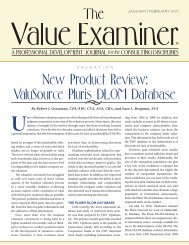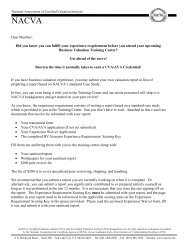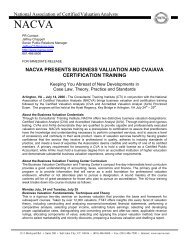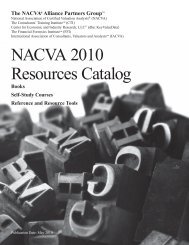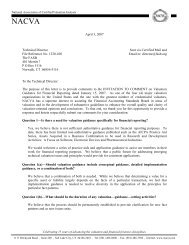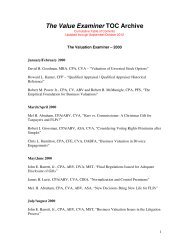VALUATION DISCOUNTS AND PREMIUMS
VALUATION DISCOUNTS AND PREMIUMS
VALUATION DISCOUNTS AND PREMIUMS
You also want an ePaper? Increase the reach of your titles
YUMPU automatically turns print PDFs into web optimized ePapers that Google loves.
<strong>VALUATION</strong> <strong>DISCOUNTS</strong> <strong>AND</strong> <strong>PREMIUMS</strong>Fundamentals, Techniques & Theory(3) Analyzed data from four large, closed-end investment companies that wereformed in 1968 – the companies specialized in restricted securities investments(4) Reviewed 89 transactions between 1968 and 1970(5) Both the average and median discounts were 33 percent(6) Almost 60 percent of the purchases were at discounts of 30 percent or higherc) Moroney Study (1973)(1) Restricted stock study(2) Analyzed the prices paid for restricted securities by 10 registered investmentcompanies—the study reflected 146 purchases(3) Average discount was 35.6 percent; median discount was 33 percent(4) Contrasted the evidence of the actual cash deals with the lower average discountsfor lack of marketability adjudicated in most prior court decisions on gift andestate tax cases(5) Found that the courts allowed discounts for lack of marketability rangingbetween 10-30 percent(6) Concluded that the courts were overvaluing interests in closely held companiesd) Maher Study (1976)(1) Restricted stock study(2) Compared prices paid for restricted stocks with the market prices of theirunrestricted counterparts(3) Discounts were derived by comparing the cost of the restricted securities to themarket value of unrestricted securities of the same class in the same companieson the acquisition date(4) Mean discount of all transactions amounted to 35.43 percent(5) Maher then eliminated the top 10 percent and bottom 10 percent to removeespecially high-risk or low-risk purchase—result was remarkably similar,yielding a mean discount of 34.73 percent(6) Concluded that most valuators underestimate the discount for lack ofmarketability(7) Also concluded that the mean discount would not contain elements of a discountfor a minority interest because it is being measured against other minorityinterestse) Trout Study (1977)(1) Restricted stock study(2) Constructed a financial model to estimate the discount that should be accordedinvestment letter stock(3) Analyzed data on purchases of investment letter stock by six mutual funds duringthe period from 1968 to 1972(4) Final database consisted of 60 purchases in the five-year period(5) Model included five variables that Trout felt may influence the size of thediscount:(a) Exchange listing(b) Number of shares outstanding22 – Chapter Seven © 1995–2011 by National Association of Certified Valuators and Analysts (NACVA). All rights reserved.2012.v1 Used by Institute of Business Appraisers with permission of NACVA for limited purpose of collaborative training.



